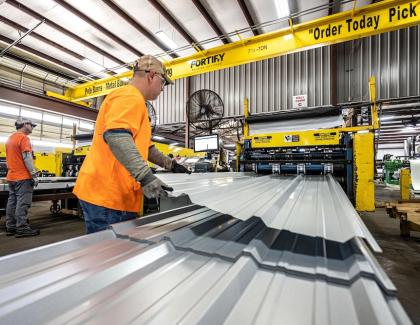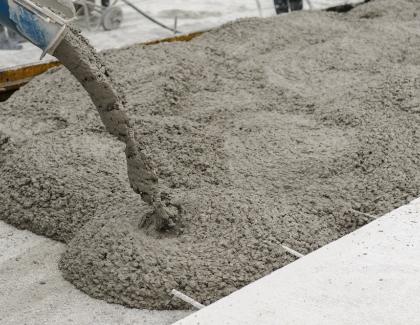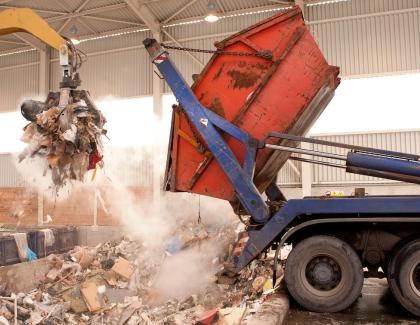Benjamin Uyeda, designer and founder of HomeMade Modern, shares his tutorial on how to make a spiral staircase out of plywood using digital fabrication.
“My goal in creating homemade modern was to take the design ideas I learned in architecture school and make them as accessible as possible,” Uyeda says. “Now, mixing digital fabrication technologies with traditional construction tools is really exciting to me because not only can we share the design files themselves, we can actually show how they're implemented in the real world.”
[Related: LEGRAND INTRODUCES NEW ULTRA-FAST USB OUTLET]
The staircase is constructed by clamping precisely-cut layers of plywood on top of each other, then glueing and screwing them together for good measure. Uyeda uses Purebond plywood to construct the staircase, which he finished with two coats of Minwax Polycrylic.
Watch the video to see the complete how-to.
[Related: 15 SMART HOME PRODUCTS MILLENNIAL HOMEBUYERS ACTUALLY WANT]
Transcript:
Today we're going to make a spiral staircase out of plywood. Each step is made from 12 layers of 3/4 inch thick furniture grade plywood. You can download the digital drawings of this project from my website. I use CNC machines to cut out the steps. My x-carve did a great job cutting out the pieces. But since I had to cut so many, I used additional CNC machines as well. I had a steel pole welded to a half-inch thick steel plate, and then I installed that right into the space where I needed the stairs. Now I was prepared for this project, and when I designed the building I made sure that there was lvl beams in the floors to support this load. the first step is going to be installed right over the half-inch thick plate. So I had to plane down an extra piece of plywood to act as a spacer I use construction adhesive in between the plywood and the steel pole, and they used wood glue in between the layers of plywood and made sure to press down on the steps firmly before driving 3-inch finish screws through the plywood. Originally, I was worried about lining up the pieces of plywood, and so I had C tin some holes that I could drive ½ inch dowels into. But it turns out I didn't really need it, so I just did it by eye. I use PureBond brand plywood from Home Depot for this project.
[Related: HOUZZ STUDY: KITCHEN, SECURITY, AND SMART HOME SPENDING ARE UP]
A lot of plywoods have glues in them that off-gas from elder hide, and since there's so much plywood in this I want to make sure I was using a low VOCs product. As we got higher up, I started using clamps to help keep the layers pressed firmly together each step required about one and a quarter full 4 foot by 8 foot sheets of plywood, which made the material cost of this staircase significantly less than the prefab metal ones I had priced out. now obviously, I'm not factoring labour into the equation, and so we kept going layer after layer screw after screw, and ended up taking about two hours per step. Once we got to the top I used the circular saw and a jigsaw to cut pieces of plywood for the landing. I glued the two layers of plywood for the landing together and then clamp them while the glue dried. The stair goes up to a head house with the leads to my roof deck, so I had to build up the sill for the door with some layers of plywood. I decided to paint the underside of the landing so that would stand out in contrast to the blonde plywood. I then glued and screwed the landing in place. now the stairs are rock solid: there is zero wiggle in them. But just to be safe, I drove some five-inch screws through the underside right where the two steps meet. this was probably the weakest part of the design, and having these extra screws there just gave me a little bit more peace of mind. I used wood putty to cover up the finish screws. Once the putty had dried I sanded over them with an orbital sander. I then used drop cloths to tent off the staircase, and then did a lot of sanding with an orbital sander. I did the detail sanding by hand with sanding sponges, but I also use this really cool Rio bead detail sander to get into the tight places.
[Related: DARK EXTERIOR MATERIALS TELL THE STORY OF THIS HOME'S PAST]
I finished the staircase with two coats of Minwax Polycrylic. I really like how this project is both simple and complex at the same time. the majority of the stairs is made from just 13 pieces of plywood that are just repeated over and over and over again. Yet the visual impact is pretty incredible. I also like that this project harnesses the power of new tools like C&C; machines it still requires traditional tools like drills and sanders. Now of course it still needs a railing, but don't worry, I'll be working on that soon. And if you think digital fabrication is interesting, stay tuned to my channel because I just signed a deal with Autodesk, and I'm going to be working in their new build space and have access to pretty cool machines just like these. The Autodesk Boston space is a new state-of-the-art facility dedicated to digital fabrication. I am super excited about this opportunity, but also feeling a little overwhelmed at all these new tools. So if you have any ideas or any experience with any of these things, feel free to hit me up on social media, and let's collaborate and figure out how we can make something incredible in this new space.
[Related: BUILT-IN STYLE: CUSTOM CABINETS ENHANCE A SPEC HOME]
Hi, Ben here, this was our most ambitious project so far and it took about ten times longer than our typical projects, so if you want to see more like it, please help us out by sharing this on social media. My goal in creating homemade modern was to take the design ideas I learned in architecture school and make them as accessible as possible. Now, mixing digital fabrication technologies with traditional construction tools is really exciting to me because not only can we share the design files themselves, we can actually show how they're implemented in the real world. So hit the thumbs up button leave a comment, or just share it on whatever platform you feel most comfortable with. We'd really appreciate it. thank you for more detailed instructions, be sure to check out my website, and if you want to see what I'm working on next, follow me on Instagram, and don't forget to subscribe. Thanks, bye.
[Related: SEE WHICH 2019 TRENDS TRANSFORMED THIS MASTER BATHROOM REDESIGN]






Add new comment